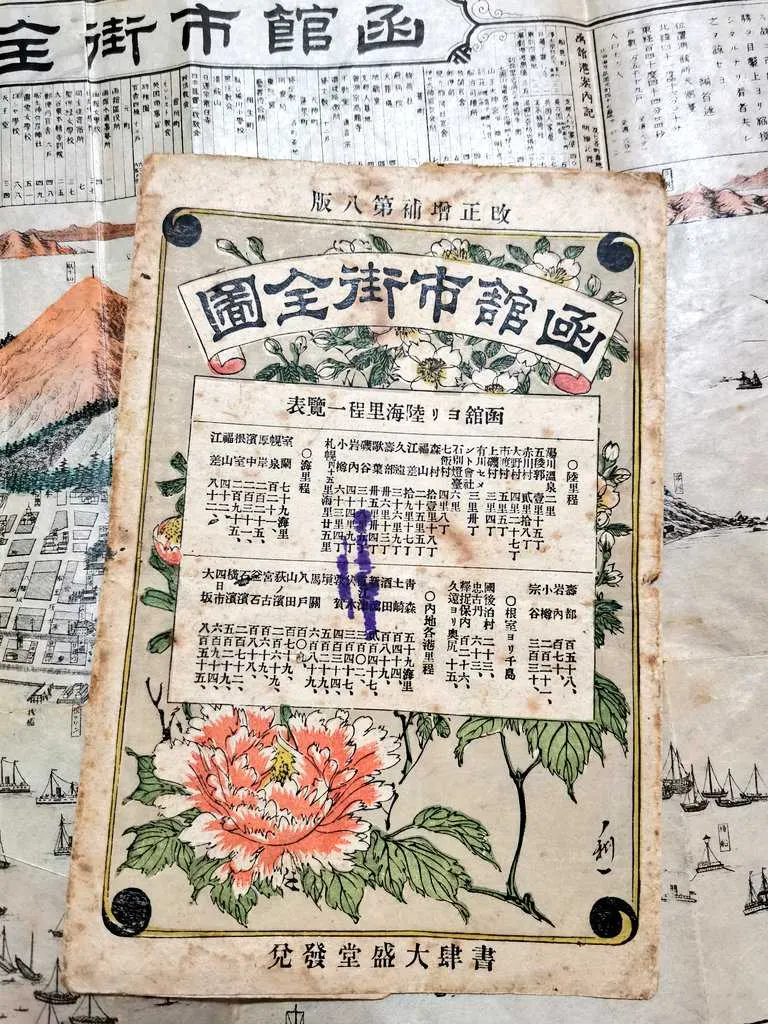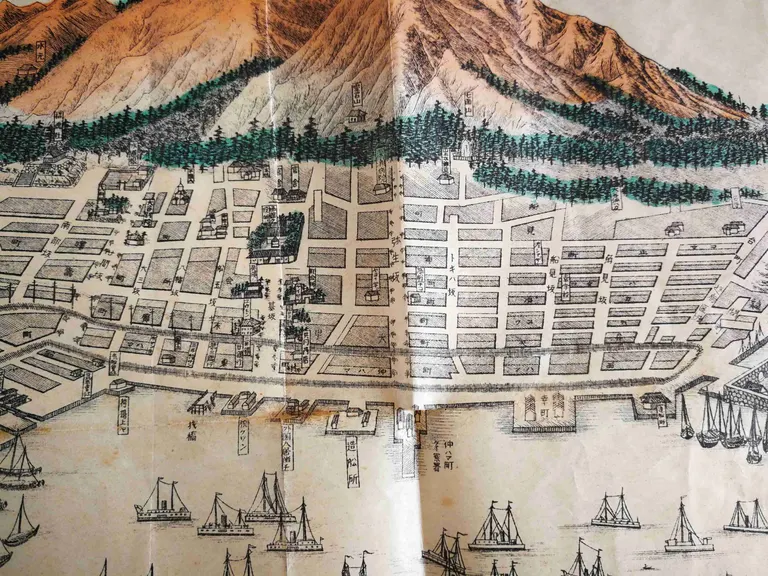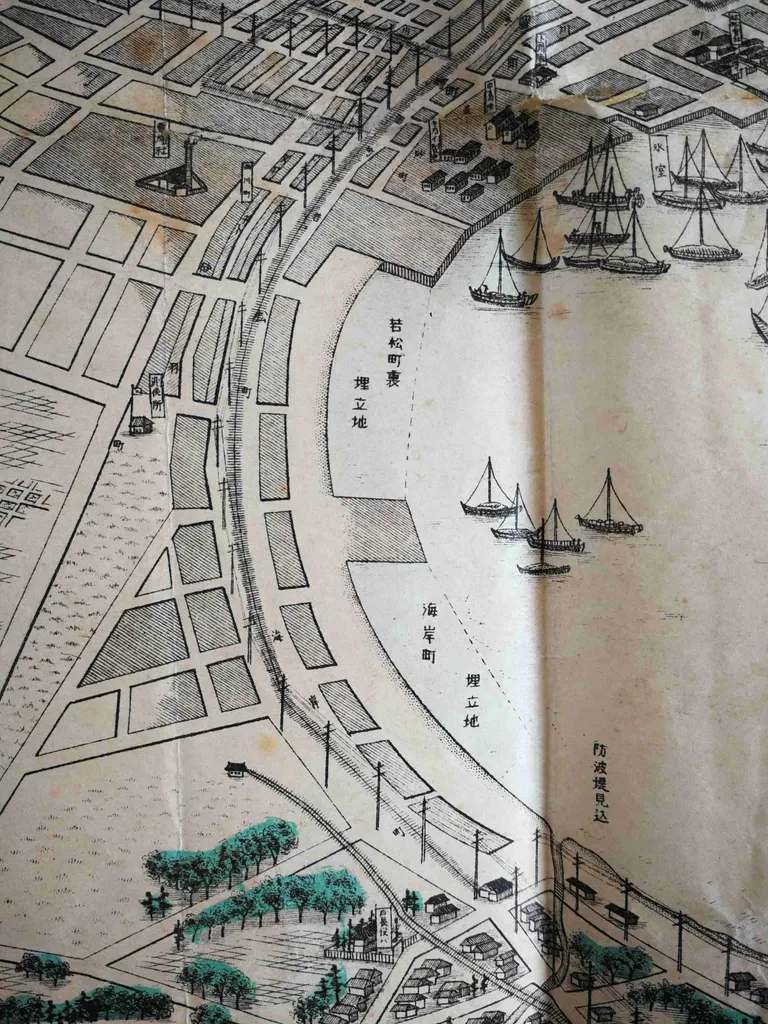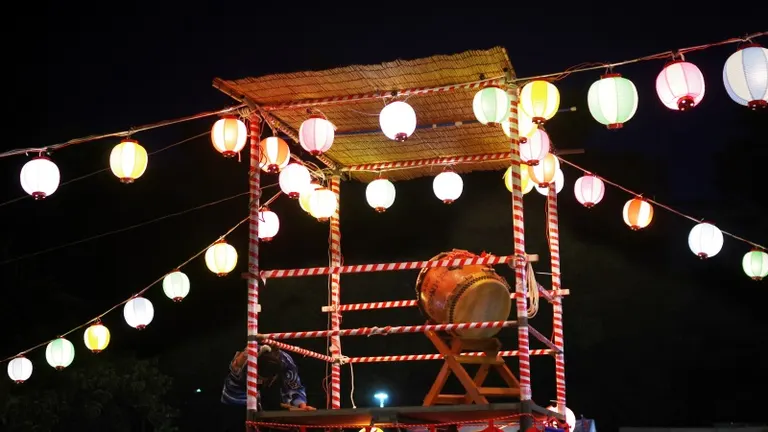
ARTICLES
A 126-year-old map of Hakodate that was forced on a German citizen because he was Japanese - what was depicted on it?
When Iskra ( https://twitter.com/DDRplanet ) tweeted about an old map of Hakodate that he had purchased at a flea market, it received a huge response.
As I was tidying up, I came across a map of Hakodate that I was once forced to buy at a flea market in Germany because I was Japanese... Issued on September 30, 1896 (Meiji 29) pic.twitter.com/o3xMEeeni1
— Iskra Comecon Design, East German and Eastern European Goods, Socialist Architecture (@DDRplanet) April 21, 2022
The old map was published on September 30, 1896 (Meiji 29), making it 126 years old. However, the beautiful flowers on the front of the map give us an idea of how lively Hakodate was on that day.
Iskra, who purchased the map, has been selling European goods online since 2005. We had the opportunity to speak to her.
Where did you purchase this map?
This was a flea market held in eastern Germany in 2011. I go shopping at flea markets in Europe about twice a year, and I bought it at one of those times.

--What was your actual interaction like with the store staff?
When I was looking at other maps, it was as if they were forcing me to buy it, saying "You'd be interested in this one too, right? You're Japanese after all" (lol). I normally sell European antiques ( click here for the ISKRA ONLINE SHOP), and I also deal in antique maps, so I thought someone might want it and ended up buying it.
What exactly is the map you purchased?
It is a map of the city of Hakodate, measuring 55cm x 44cm. It was in poor condition, with tears along the folds.

--What did you think about the reactions on Twitter this time?
I tweeted about it when I bought it in 2011, but there was no response at the time, so I kept it at home. I thought maybe it would be better to keep it at the museum, but time passed and I forgot about it. The other day, I was reading Golden Kamuy and a train crashed into Hakodate Station and fell into the sea, so I remembered that I must have had a map from that time!

Thank you Iskra!
So what exactly was this map like? We asked city walking researcher Satoru Wada, also known as "Brassatoru" ( https://twitter.com/satoru_wada ), to take a look.
This map was published in 1896 (Meiji 29). It was the year before the horse-drawn railway, the precursor to the city tram, was opened, and six years before the Kan-Taru Railway, the precursor to the JR line, was opened. Of course, the Seikan Ferry did not exist yet. All of the railway lines depicted are planned lines, and you can see that Hakodate Station (first generation), the starting point of the Kan-Taru Railway, was located in a coastal town further north (closer) than the current station.
The center of the city is the present-day Western District, and is depicted with the Hakodate Ward Office in Motomachi Park at its center. After the opening of Hakodate Station and repeated fires, the center of the city gradually moved to Jujigai and in front of Hakodate Station.
What is interesting is that Goryokaku is not depicted. Nowadays Goryokaku is a tourist attraction, but at the time, memories of the Battle of Hakodate were still fresh, and it may have been decided not to depict the symbol of the former Shogunate army, which was the enemy of the new government. (Wada Tetsu)
(Added June 1, 2022) A high-resolution image of the same map was published on the website of the International Research Center for Japanese Studies, and when I checked it, I found that Goryokaku was drawn in the bottom left corner. In light of the fact that the "Hekketsuhi" monument at the foot of Mount Hakodate, which commemorates the war dead of the former Shogunate army, is drawn with their names on it, my assumption that the Hakodate War and historical sites of the former Shogunate army were taboo was incorrect. I apologize and have made the correction, and I would like to thank the person who pointed this out. (Wada Satoshi)
Looking at the old map again with Wada's commentary, the situation in Hakodate emerges more clearly. An old map that I happened to come across at a flea market in Germany has taught us about what things were like back then, more than 100 years later.
You may also want to read this!
Recommended for those who read this article ・Fishing at a shrine! Cute Ezo fortune-telling slips at the long approach and historic Iwanai Shrine ・Exploring the charm of bricks and pottery! The Ceramic Art Center in Ebetsu City, the city of bricks Topics near this article ・Hakodate's "squid" shaped fortune slips! "Yukura Shrine" is the guardian deity of Yunokawa Onsen Hakodate junior high school graduation ceremony and songs held during the coronavirus pandemic











